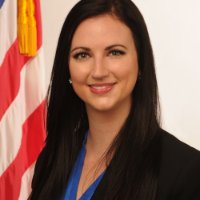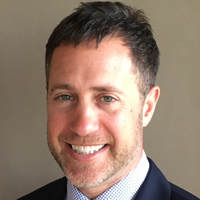|
6:30 AM – 8:30 AM
|
Registration and Networking Breakfast
|
|
8:30 AM – 8:45 AM
|
Welcome Remarks
- Pat Sheridan, Vice President, U.S. Federal, FireEye
|
|
8:45 AM – 9:15 AM
|
Opening Keynote
- Kevin Mandia, Chief Executive Officer and Board Director, FireEye
|
|
9:15 AM – 9:45 AM
|
Federal Keynote: A DOD Perspective
- Rear Admiral Gene F. Price, Deputy Commander, U.S. Fleet Cyber Command/U.S. 10th Fleet, U.S. Navy
|
|
9:45 AM – 10:15 AM
|
Networking Break and Exhibitor Showcase
|
|
10:15 AM – 11:15 AM
|
Enabling the Government CISO to Command and Protect
Along with compliance requirements, agency Chief Information Security Officers oversee the security of the government’s networks and critical infrastructure from domestic and foreign attacks. The monitoring and fortification of these systems is critical to protecting the public’s health, safety and economic prosperity. Potential oversights can put the nation at risk to insider threats and those seeking to gain access to sensitive data, intelligence or possibly launch malicious programs into our systems and networks. This session will take a deep-dive into the immediate and long-term hurdles facing CISOs across all levels of government missions from providing security for information systems that support operations and assets to the expansion of responsibility for whole agency cyber accountability.
Speakers:
- Matt Conner, Deputy Director for Cybersecurity and Deputy Chief Information Security Officer, National Geospatial-Intelligence Agency
- Marti Eckert, Assistant Commissioner for Information Security and Chief Information Security Officer, Social Security Administration
- Mitchell Komaroff, Director, Cybersecurity Implementation and Acquisition Integration, Office of the DCIO(CS), Department of Defense
- John MacMichael, Chief Information Security Officer, Office of the Chief Technology Office, District of Columbia Government
- Moderator: Tony Cole, Vice President and Global Government Chief Technology Officer, FireEye
|
|
11:15 AM – 11:45 AM
|
Keynote: A State and Local Perspective
- T.H. Governor Rick Snyder, State of Michigan
|
|
11:45 AM - 12:35 PM
|
Networking Lunch and Exhibitor Showcase
|
|
12:35 PM – 1:00 PM
|
Keynote: The Hill Perspective
- T.H. Senator Mark Warner, U.S. Senate, State of Virginia
|
|
1:00 PM – 2:30 PM
|
Cyber Threat Intelligence
Know your enemy. Modern cyber attackers are sophisticated, well-funded and well-organized. For government agencies to stop them, they need to know exactly how they work. This track will look directly at the hackers that want to steal government information, explaining how they work, why they do it and what government can do to stop them.
|
Readiness and Response
Federal agencies not only need to be ready at all times for a breach, but they must also be able to quickly respond once the inevitable breach happens. Readiness and response are key to minimizing the impact of cyber breaches. In this track, we’ll look at ways to improve readiness and response, along with a look into NIST Special Publication 800-184 “Guide for Cybersecurity Event Recovery.”
|
Current Trends in the Cyber Threatscape
Russia, China and Iran. Legacy systems and an aging workforce. An incredibly vulnerable national critical infrastructure. Cybersecurity threats exist almost everywhere you look. This track will explore current trends in the cyber threatscape and the mission-critical aspects of your security posture you need to focus on in 2017.
|
|
1:00 PM – 1:45 PM
|
Breakout 1.1
- Christopher Porter, Manager, FireEye Horizons
|
Breakout 2.1
Ron Bushar, VP Global Government Services, FireEye
|
Breakout 3.1
2017 Mandiant M-Trends Report Mandiant Consulting
|
|
1:45 PM – 2:30 PM
|
Breakout 1.2
Moving Beyond Compliance
Speakers:
- Christopher Glyer, Chief Security Architect, FireEye
- Ira Hoffman, Partner and Shareholder, Butzel Long
- Sean Kelley, Chief Information Security Officer, Environmental Protection Agency
- Jeffrey Wilk, Senior Technical Officer for Cyber Network Defense, Office of the Chief Information Officer, Defense Intelligence Agency
|
Breakout 2.2
Creating a Cybersecurity Risk Management Framework
Speakers:
- Michael Bartock, Computer Scientist, National Institute of Standards and Technology
- Philip Lieberman, President and CEO, Lieberman Software
- Dinesh Suri, Principal Security Engineer, National Core Technologies, LLC
|
Breakout 3.2
Threat Intelligence in Healthcare
Speakers:
- Maggie Amato, Security Design + Innovation, Department of Health and Human Services
- Emily Cranston, Senior Threat Intelligence Analyst, FireEye
- Leo Scanlon, Deputy Chief Information Security Officer, Department of Health and Human Services
- Vinayak “Vik” Sinha, Senior Technologist, Department of Health and Human Services
|
|
2:30 PM – 3:00 PM
|
Closing Keynote: Enhancing National Cybersecurity and Improving Critical Infrastructure
- Rear Admiral Sam Perez, U.S. Navy (RET) Managing Director, SBD Advisors
|
|
3:00 PM – 4:30 PM
|
Networking Reception in the Exhibitor Showcase
|









 In order to protect themselves, federal, state and local governments and their partners need a clearer picture of the rapidly-evolving threat landscape that has drastically changed with new rules of engagement. Nation-state actors, cyber criminals and hackers have become less predictable. The attack surface continues to grow with the rise in connectivity, data loads and access to industrial control systems. To identify, assess, respond and mitigate threats such as ransomware, extortion, espionage and zero-day attacks, as well as predict and prevent the “unknown threat,” agencies need to build intelligence-led security operations. CIOs and CISOs are drowning in their own security stack while analysts are exhausted by “alert fatigue.” Operationalizing security enables security professionals to rapidly collect, analyze and disseminate threat intelligence across the enterprise, assess risk based on an adversary’s motivation and capability and align resources to the most impactful threats.
In order to protect themselves, federal, state and local governments and their partners need a clearer picture of the rapidly-evolving threat landscape that has drastically changed with new rules of engagement. Nation-state actors, cyber criminals and hackers have become less predictable. The attack surface continues to grow with the rise in connectivity, data loads and access to industrial control systems. To identify, assess, respond and mitigate threats such as ransomware, extortion, espionage and zero-day attacks, as well as predict and prevent the “unknown threat,” agencies need to build intelligence-led security operations. CIOs and CISOs are drowning in their own security stack while analysts are exhausted by “alert fatigue.” Operationalizing security enables security professionals to rapidly collect, analyze and disseminate threat intelligence across the enterprise, assess risk based on an adversary’s motivation and capability and align resources to the most impactful threats.
















